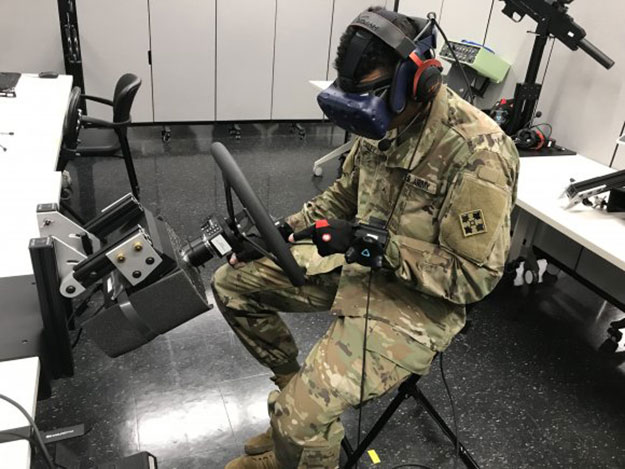Soon Soldiers worldwide could have a wealth of training options at their home station or armory -- on a virtual platform.
The Army recently conducted user assessments of its "One World Terrain" technology, a key component of the Synthetic Training Environment that will allow soldiers to train virtually in 3-D on battlefields around the world from home station or deployed locations.
Soldiers from the 1st Infantry Division out of Fort Riley, Kansas, helped assess the 3-D terrain database which will be used on the Army's training simulation platforms. They also tested a new training management tool and training simulation software that will tie the different simulation platforms together to portray an evolving scenario for all users involved in mission rehearsals.
 Soldier feedback will help shape development of the synthetic training environment, said members of the STE Cross-Functional Team.
Soldier feedback will help shape development of the synthetic training environment, said members of the STE Cross-Functional Team.
"From our perspective, we're very encouraged on where we are and what we've been able to accomplish in the 18 months since the CFT has been formed," said Maj. Gen. Maria Gervais, director of the Synthetic Training Environment CFT, now headquartered near the University of Central Florida campus in Orlando.
The synthetic training environment will blend a combination of live, virtual and constructive training together seamlessly, Gervais said.
The Army expects to award contracts next month to further develop STE platforms, she said. Army Futures Command will use the Other Transaction Authority, or OTA, to expedite acquisition and fielding of the technologies, she said.
The idea is for One World Terrain to be used by all the different training simulation platforms, including reconfigurable collective trainers currently in development, she explained. Over the past year, her team has been assessing prototypes for aircraft, armored vehicles and infantry weapons systems trainers.
In April, soldiers at Fort Carson, Colorado, tested a platform for aviation training called the Reconfigurable Virtual Collective Trainer-Air, or RVCT-A.
M2 Bradley and Stryker crews have been testing another prototype -- the Reconfigurable Virtual Collective Trainer-Ground, or RVCT-G, at Fort Riley, Kansas. In addition to replicating the range of the Army's ground vehicles, the RVCT-G also supports dismounted soldier training.
Putting the platforms together in a synthetic training environment will give soldiers a realistic, composite training environment where exercises can be performed at any installation or training range, she said. The CFT hopes to rapidly expand the Army's virtual training simulations capabilities from company to battalion levels and even up to Army component commands.
Soldiers have been giving CFT members feedback on how the systems meet their needs and what aspects of the training needs improvement.
"We want to make sure that we're providing a capability that soldiers will see as value added in the execution of their mission," Gervais said. "To me, the most exciting part is they are now taking ownership of this. Once those soldiers on the ground and the units and the leaders on the ground know it's value added to their mission, they are going to use this."
The One World Terrain prototype is a database that will bring a 3-D representation of global training scenarios for each of the service's simulation trainers. It will be accessible across the U.S. military's training platforms. Gervais said the Army expects to meet initial operating capability requirements by the fourth quarter of fiscal year 2021 and full operational capability sometime in fiscal 2023.
By the time the service achieves FOC for One World Terrain, it plans to also support training in the synthetic training environment across each of its six warfighting functions: mission command, movement and maneuvering, intelligence, fires, sustainment and protection. Gervais said that four to five installations will use the STE capability in fiscal 2021 and then it will expand.
Three Army divisions and 24 Marine Corps battalions already have begun using the One World Terrain capability. The Army's National Training Center at Fort Irwin, California, has used OWT as well as one third of U.S. Special Forces units. The 7th Special Forces Group from Eglin Air Force Base, Florida, used One World Terrain while flying drones at the NTC.





Read Comments